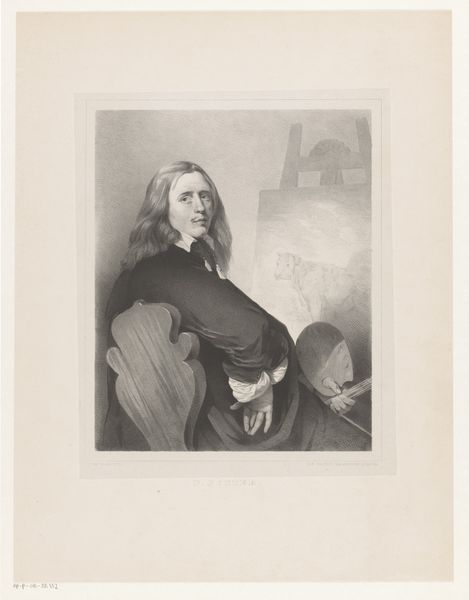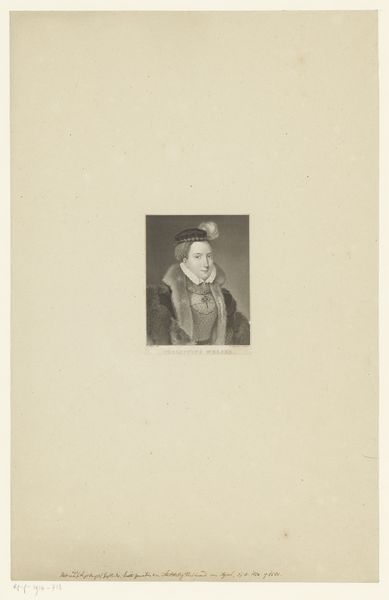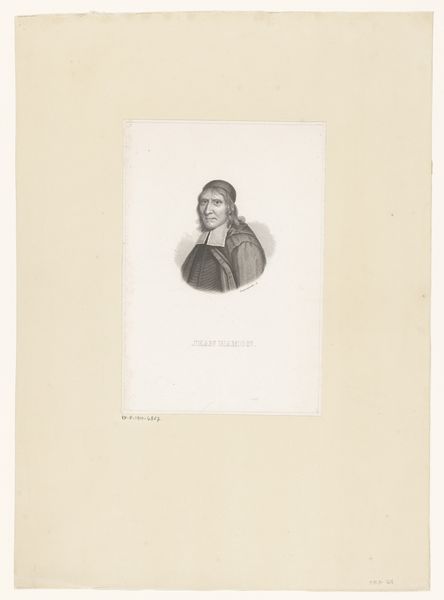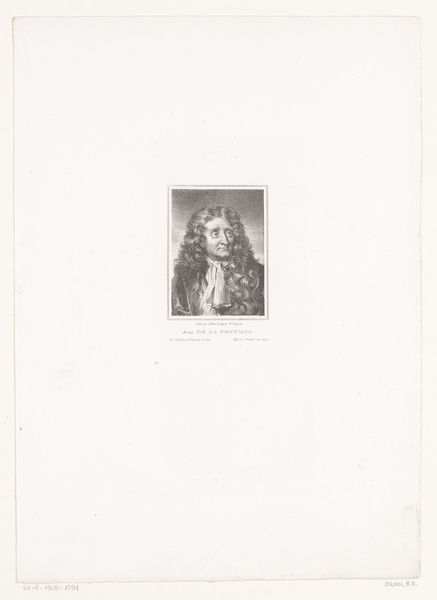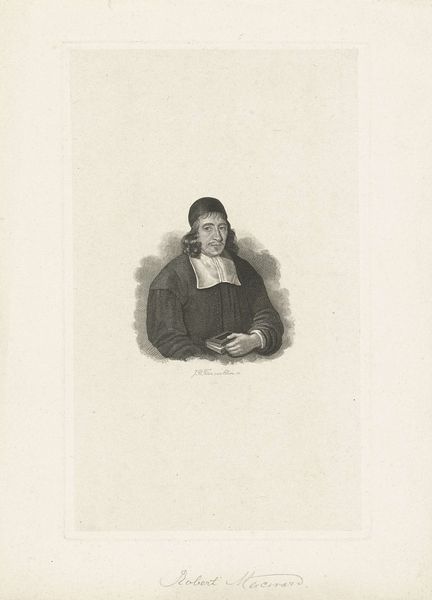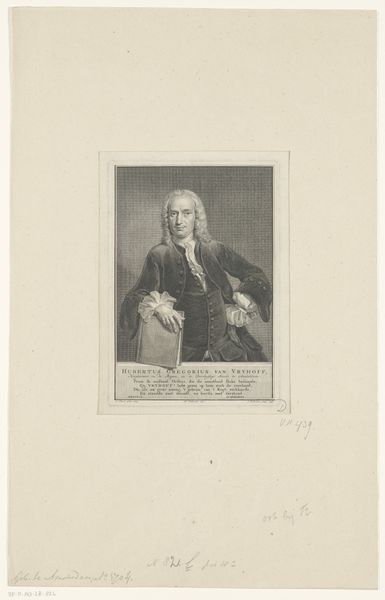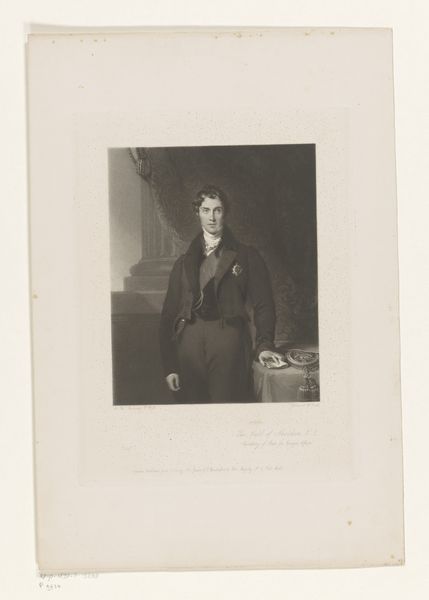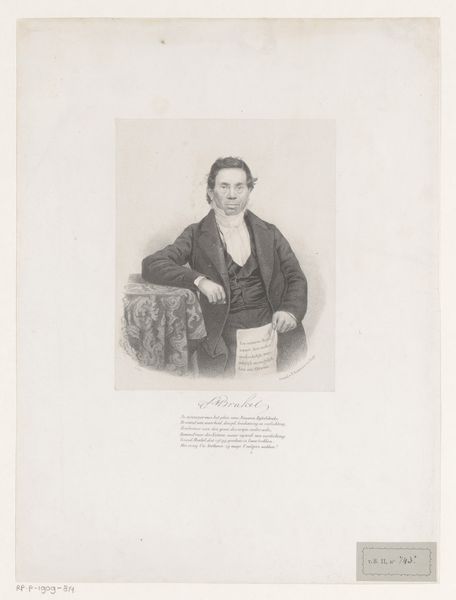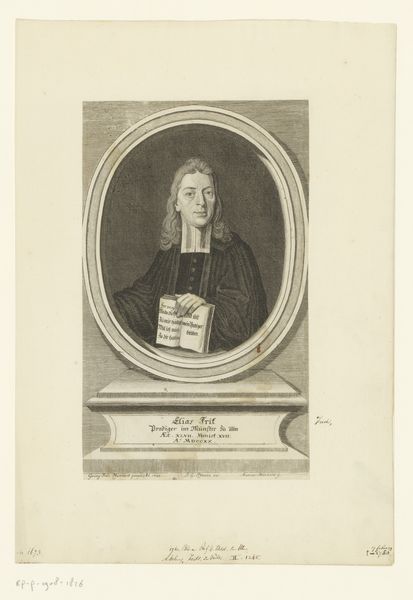
Dimensions: height 365 mm, width 273 mm
Copyright: Rijks Museum: Open Domain
Curator: This is Johannes Christiaan d'Arnaud Gerkens' "Portret van Paulus Potter," an etching on paper from between 1824 and 1863, held here at the Rijksmuseum. Editor: My immediate reaction is that of thoughtful stillness. There's a quiet confidence, and an introspective air about Potter in the etching, even though he's presented with the tools of his trade. Curator: Considering the portrait, let’s think about the cultural capital associated with artistic professions during this period, especially within the Dutch Golden Age revival. To depict Potter with his tools suggests an intention beyond a simple likeness. It positions him, and the art world more broadly, within a specific framework of labour, class, and identity. Editor: Indeed, these painterly tools signify more than just vocation, don't they? Note how they are subtly placed. The palette and brushes could represent ingenuity and craftsmanship, certainly, but might they also represent legacy? The way light and shadow fall could speak of artistic tradition passed through time. It prompts pondering how artists viewed their own cultural contributions. Curator: Exactly! It also highlights the intersection of identity and artistic production. To further contextualize, we should consider the male gaze at play here, right? Gerkens, a male artist, represents Potter, another male artist. Editor: That makes me notice his attire as part of the symbol system. The plush fabric indicates his social standing but consider its relation to earth: this rich cloth contrasts to what he probably wears to meet mud of pasture painting—a point on class differences between painting for rich and rural patrons, as reflected in sartorial and visual representation. Curator: Yes! Furthermore, let’s question who benefits from such representations? Does it reify or subvert existing social structures? The portrait becomes a negotiation between artistic legacy and societal expectation. Editor: It does make me wonder, now: how do you feel this echoes down through history for our contemporary sensibilities? Do we see continuity of these social expectations or new challenges that speak to fresh, dynamic identities? Curator: An important question to consider when encountering art! These dialogues open our minds beyond face value and force us to interrogate representation and artistic context. Editor: Ultimately, it's such a privilege to share that act of critical and considered interpretation, helping visitors form richer relationships with visual art's symbolic potential and emotional resonances.
Comments
No comments
Be the first to comment and join the conversation on the ultimate creative platform.
